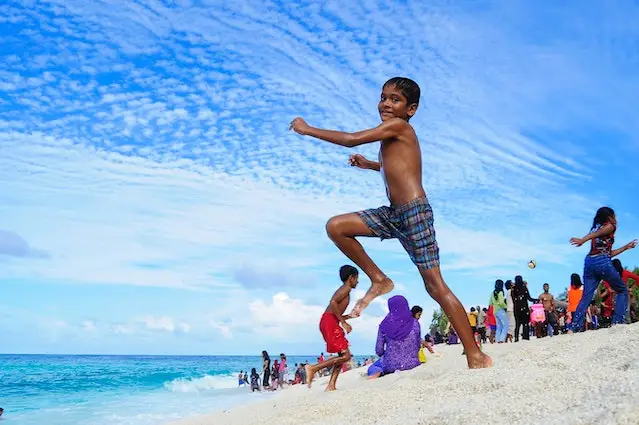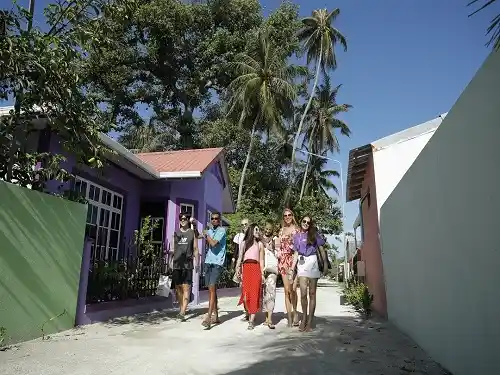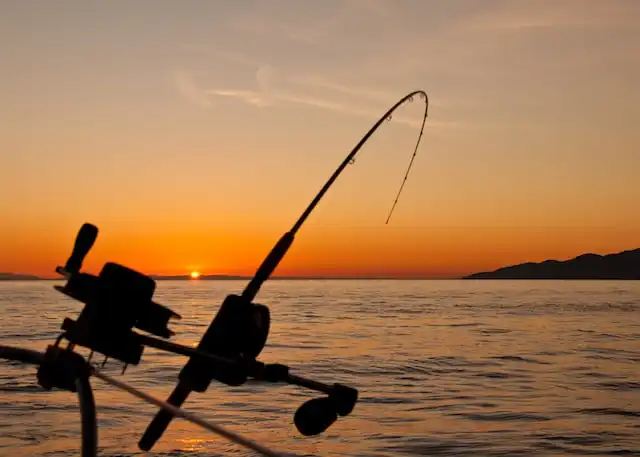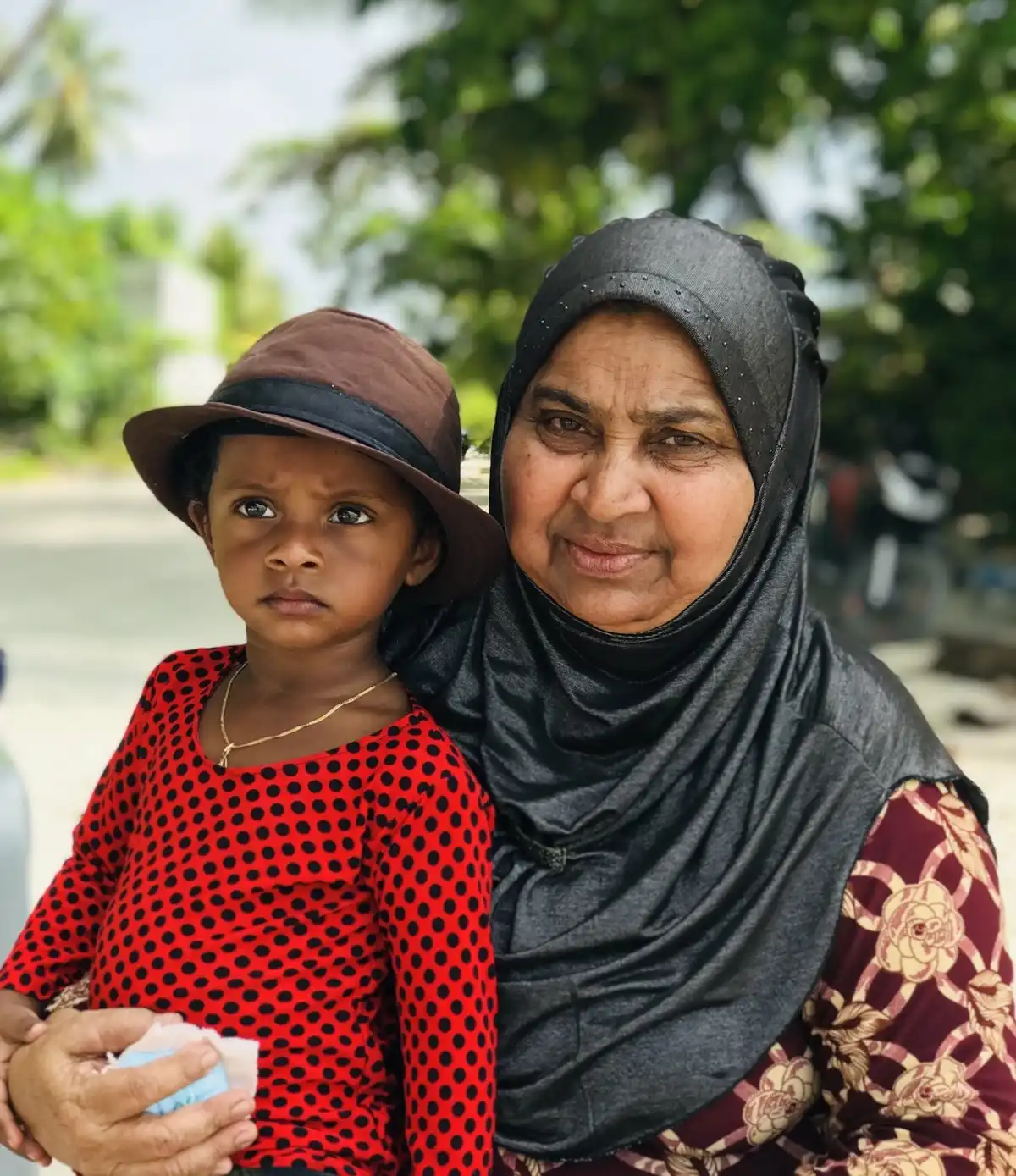Discover a pristine northern paradise with traditional fishing culture, untouched beaches, and authentic Maldivian lifestyle in the remote Haa Alifu Atoll
Located in the Haa Alifu Atoll in the northern Maldives, Filladhoo Island offers visitors a rare glimpse into authentic Maldivian island life in one of the country's most pristine and remote regions. This peaceful island maintains its natural beauty and cultural heritage while providing access to some of the Maldives' most untouched marine environments.
What makes Filladhoo special is its traditional fishing culture and strong community bonds. Unlike more developed islands, Filladhoo has preserved its authentic way of life, with fishing remaining the primary livelihood for many residents. The island's relatively isolated location has helped maintain its pristine beaches and vibrant coral reefs, creating an ideal destination for travelers seeking an off-the-beaten-path experience.
Visitors to Filladhoo are drawn by its untouched beaches, exceptional snorkeling opportunities, traditional fishing culture, and chances to engage with local community life. The island's remote location in the northern Maldives means fewer tourists and a more authentic experience, while its natural environment offers diverse activities both on land and in the surrounding crystal-clear waters.
Filladhoo Island is situated in the northern part of the Maldives in Haa Alifu Atoll, approximately 320 kilometers north of Male. This remote location in the northern atolls provides a more pristine and less-visited environment compared to islands closer to the capital.
Its position within Haa Alifu Atoll offers access to some of the Maldives' most spectacular diving and snorkeling sites, with healthy coral reefs and abundant marine life. The northern atolls are known for their exceptional biodiversity both above and below the water.
Filladhoo Island stands out among Maldivian islands for its preserved traditional fishing practices and strong maritime heritage, offering visitors a glimpse into the authentic fishing lifestyle that has sustained Maldivian communities for generations.

Filladhoo maintains traditional pole-and-line fishing methods that have been practiced for generations, demonstrating sustainable fishing techniques that have allowed the community to live in harmony with the marine environment.

The island is known for its night fishing excursions where visitors can join local fishermen under the stars, using traditional hand-line methods to catch reef fish while learning about local fishing knowledge and techniques.

Beyond its fishing heritage, Filladhoo boasts untouched white sand beaches with crystal-clear waters, offering the classic Maldivian beach experience without the crowds found on more developed islands.

Filladhoo is home to a close-knit community that has maintained traditional island values and sustainable practices, offering visitors authentic cultural interactions rarely found in more touristic areas.
Filladhoo's fishing heritage includes several distinctive elements:
These fishing practices make Filladhoo an ideal destination for travelers interested in experiencing a different aspect of Maldivian island life and understanding the diverse ways communities have adapted to their environments throughout the archipelago.
The Filladhoo community maintains several sustainable practices:
These practices have helped maintain the island's natural beauty and biodiversity while supporting the local community's traditional way of life, creating a model of sustainable island living.
Filladhoo offers a limited but authentic range of accommodation options that focus on genuine experiences and local hospitality. The island's guesthouses provide comfortable stays while maintaining strong connections to the local community and traditional lifestyle.

A small number of family-operated guesthouses offer clean, comfortable accommodations with personal service. These properties feature air-conditioned rooms with private bathrooms, home-cooked Maldivian meals, and direct access to local knowledge through host families.
Price Range: $50-80 per night
Features: Authentic hospitality, cultural insights, local excursion arrangements

For travelers seeking the most authentic experience, some fishing families offer homestay accommodations where guests can live alongside local families, participate in fishing activities, and gain deeper insights into traditional island life.
Price Range: $40-65 per night
Features: Cultural immersion, fresh seafood meals, participation in daily island activities

A limited number of properties offer beachfront locations with direct access to the island's beautiful shores. These accommodations provide stunning ocean views and the soothing sounds of waves, creating a peaceful environment for those seeking proximity to the sea.
Price Range: $65-95 per night
Features: Beach access, ocean views, water sport facilities
Filladhoo is blessed with pristine beaches and a spectacular marine environment. The island's remote location in the northern atolls ensures the surrounding reefs remain in excellent condition, offering fantastic snorkeling and marine encounters.
Filladhoo features stunning white sand beaches that remain largely untouched by tourism development. The eastern beach is particularly impressive, with powdery sand and crystal-clear turquoise waters that create postcard-perfect vistas. The western side offers a more sheltered environment, with calm waters ideal for swimming.
The island has a designated "bikini beach" where tourists can wear Western-style swimwear. This beautiful stretch of sand provides a relaxing environment while respecting local cultural norms. The remaining beaches require modest dress as they are used by the local community.
Unique to Filladhoo is the traditional fishing beach where local boats (dhonis) are launched and maintained. This area provides fascinating insights into the island's fishing culture, with opportunities to observe fishermen preparing their boats and equipment or returning with their daily catch.


The waters around Filladhoo Island offer exceptional marine biodiversity:
Haa Alifu Atoll is known for its exceptional marine biodiversity and healthier coral systems compared to some southern atolls, making Filladhoo an ideal base for underwater exploration.
Filladhoo offers a unique blend of fishing experiences and natural adventures. The island's maritime traditions provide visitors with opportunities to connect with a different aspect of Maldivian culture while enjoying its pristine natural environment.











Filladhoo is home to a close-knit community of approximately 600 residents who maintain strong traditional values and fishing heritage. The island's population is known for its warm hospitality, maritime expertise, and preservation of authentic Maldivian culture.
Daily life on Filladhoo revolves around the rhythm of fishing activities, prayer times, and community gatherings. Mornings often begin with fishermen heading out to sea in traditional dhonis, while others prepare equipment or process the previous day's catch. The island awakens with the call to prayer, followed by a day of work, family responsibilities, and community interactions. Fishing dominates the economy, with many households involved in various aspects of the fishing industry from catching to processing. This maritime lifestyle has created a sustainable approach to island living that continues to this day.
Filladhoo preserves many traditional Maldivian customs and cultural practices. Religious observances play an important role in community life, with festivals like Eid celebrated enthusiastically. Cultural expressions such as Boduberu performances remain vibrant, while traditional practices including boat building, net making, and fishing techniques are still maintained by community members. The island's relative isolation in the northern atolls has helped preserve these traditions with less outside influence than islands closer to Male.
What makes Filladhoo's community special is their deep connection to the sea. The knowledge of ocean currents, fish migrations, weather patterns, and traditional navigation has been passed down through generations, creating a distinctive maritime identity. Community members take pride in their fishing skills and the island's reputation for quality seafood. This fishing focus shapes many aspects of island life, from daily routines to celebrations, creating a community identity that is deeply intertwined with the surrounding ocean.


Discover the maritime heritage, pristine beaches, and genuine island lifestyle of Filladhoo. Book your stay today for an unforgettable cultural and natural experience in Haa Alifu Atoll.
Plan Your TripThe most convenient way to reach Filladhoo is by domestic flight from Male to Hanimaadhoo Airport (50-60 minutes), followed by a 30-minute speedboat transfer. Due to the island's remote location in the northern atolls, direct public ferry services from Male are limited. Most guesthouses can arrange the complete transfer from Male, including the domestic flight and speedboat connection. When planning your journey, remember that weather conditions can occasionally affect flight schedules in this region, so it's advisable to allow buffer days in your travel plans. The journey to Filladhoo is part of the adventure, offering beautiful aerial views of the Maldivian atolls during the flight and a chance to experience the stunning blue waters during the speedboat transfer.
Filladhoo's fishing traditions stand out in the Maldives because the island has preserved many traditional fishing methods that have been practiced for generations. The community continues to use sustainable pole-and-line techniques for tuna fishing, which minimizes bycatch and environmental impact. Night fishing using traditional hand-line methods remains an important practice, with knowledge of the best fishing spots and techniques passed down through families. The island maintains traditional boat building skills, with local craftsmen constructing and maintaining the wooden dhonis (traditional fishing boats) using techniques refined over centuries. Fish processing methods including drying, smoking, and making traditional Maldivian fish products like rihaakuru (fish paste) are still practiced. The community follows seasonal fishing patterns based on monsoon changes and fish migrations, demonstrating deep ecological knowledge. These preserved traditions offer visitors insights into sustainable fishing practices that have allowed Maldivian communities to thrive in harmony with the ocean for generations, providing a glimpse into an authentic way of life that is becoming increasingly rare in more developed parts of the country.
The best time to visit Filladhoo Island is during the northeast monsoon season (December to April), which brings dry, sunny weather with lower humidity and calmer seas. This period is ideal for water activities, with excellent visibility for snorkeling and diving. For those interested in experiencing the island's fishing traditions, this dry season also coincides with good fishing conditions, making it an excellent time to participate in fishing excursions with locals. The southwest monsoon (May to November) brings occasional rain showers but also lower prices and fewer tourists. This season can still offer good fishing opportunities, though sea conditions may be rougher on some days. Water temperature remains warm (27-30°C/80-86°F) throughout the year. Due to Filladhoo's northern location, it may experience slightly different weather patterns than southern atolls, with the possibility of brief rain showers even during the dry season. The shoulder months of November and April often offer a good balance of favorable weather and lower visitor numbers.
Accommodation on Filladhoo is limited and simple, reflecting the island's authentic character and minimal tourism development. The island offers a small number of family-run guesthouses that provide clean, comfortable rooms with basic amenities including air conditioning, private bathrooms with hot water, and Wi-Fi (though connectivity may be inconsistent). Most accommodations offer full-board packages that include three home-cooked Maldivian meals daily, featuring fresh seafood caught by local fishermen. Some fishing families also offer homestay experiences where guests stay in a room within a family home, providing deeper cultural immersion and the opportunity to participate in fishing activities. Luxury amenities are limited, and the focus is on authentic experiences rather than high-end facilities. What these accommodations lack in luxury, they make up for in personal service, cultural insights, and genuine hospitality. Visitors should adjust their expectations accordingly and embrace the opportunity to experience authentic island life rather than expecting resort-style amenities.
Yes, visitors to Filladhoo have excellent opportunities to participate in traditional fishing activities, which is one of the island's unique attractions. Most guesthouses can arrange for guests to join local fishermen on various fishing excursions, from morning tuna fishing trips to evening reef fishing and night fishing experiences. Traditional pole-and-line tuna fishing demonstrations allow you to learn about and try this sustainable fishing method that has been practiced for generations. Hand-line reef fishing trips provide opportunities to catch various reef fish species while learning about local fishing grounds and techniques. Night fishing excursions are particularly popular, where you can fish under the stars using traditional methods while enjoying the peaceful evening atmosphere. Some accommodations offer more immersive experiences where visitors can participate in the entire process from catching fish to preparing and cooking them for meals. These activities provide not just entertainment but educational insights into sustainable fishing practices and maritime traditions. The level of participation can be adjusted based on your interest and experience, from simple observation to active involvement. Participating in these activities provides a unique experience not commonly available on other Maldivian islands while supporting the local fishing community.